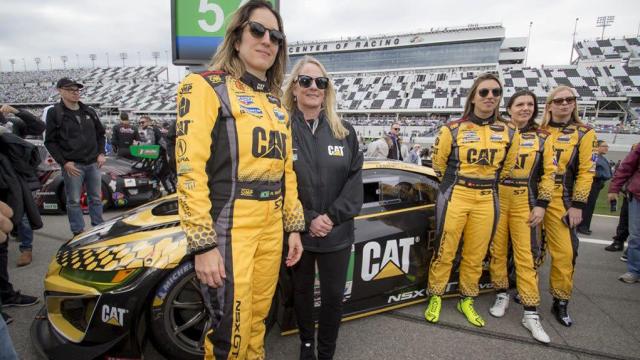When Jackie Heinricher and Michael Shank announced that they’d be teaming up to form an all-female racing team ahead of the 2019 IMSA season, it was hard not to be excited. Great drivers like Katherine Legge and Simona de Silvestro had signed on to drive the Acura NSX GT3, and the whole operation was going to compete in the Rolex 24. Maybe they’d even go to Le Mans. Except, the whole thing fell apart long before that happened.
A recent article in the New York Times outlines the breathless excitement and gut-punch failure of a team that had so much promise. Perhaps most significantly, the story opens with sponsorship. That is, it starts with a problem that still plagues many female drivers seeking to break into the racing world:
She knew it would take millions of dollars to run a team properly, but she said she felt confident that companies owned by women, or run by women, or interested in marketing their products to women, would quickly deliver all the sponsorships her team would need.
“By now I would have thought the car would be covered in tampon ads and Massengill and whatever,” she said. “I didn’t get any bites.”
Instead, the team found its main support from Caterpillar, the construction equipment manufacturer. That financing was enough to get her dream rolling, and in late January 2019, Heinricher Racing made its debut in the GT Daytona Class of sports car racing in the International Motor Sports Association. In the association’s 50 years of racing, the team was the first to complete a season using exclusively female drivers — and it finished the season in October in the top 10.
When Heinricher visited Caterpillar in September to discuss plans for this season, however, she was told the company had decided it would no longer bankroll her team. As the 2020 season got underway, Heinricher raced the clock to find a sponsor to keep her team together.
The story’s author, Roy Furchgott, does a great job tracking the historical trajectory of women in motorsport. I’m not going to summarise what he’s written because you should all just go read it. He references Janet Guthrie’s incredible feats back in the 1960s and 70s, the rampant misogyny of motorsport. By the end of the article, you really get the sense that this motorsport kind of doesn’t want women.
Basically, the concept of an all-female team in an otherwise entirely male-dominated sport is still considered a gimmick. It doesn’t matter that Katherine Legge was a runner-up IMSA champion in 2018, that Christina Nielsen finished first in class in IMSA in 2016 and ‘17.
It didn’t matter that Simona de Silvestro and Bia Figueiredo had experience in just about every kind of motorsport discipline imaginable. It didn’t matter that IMSA is a series full of gentleman drivers who compete because they have the money more than the merit, that there are plenty of men out there with lengthy careers who just haven’t achieved much.
It’s the women who are the gimmick. It’s the women who don’t belong on the racing field. And it’s the outdated mindset that we still have to contend with, even in the thick of the 21st century.
